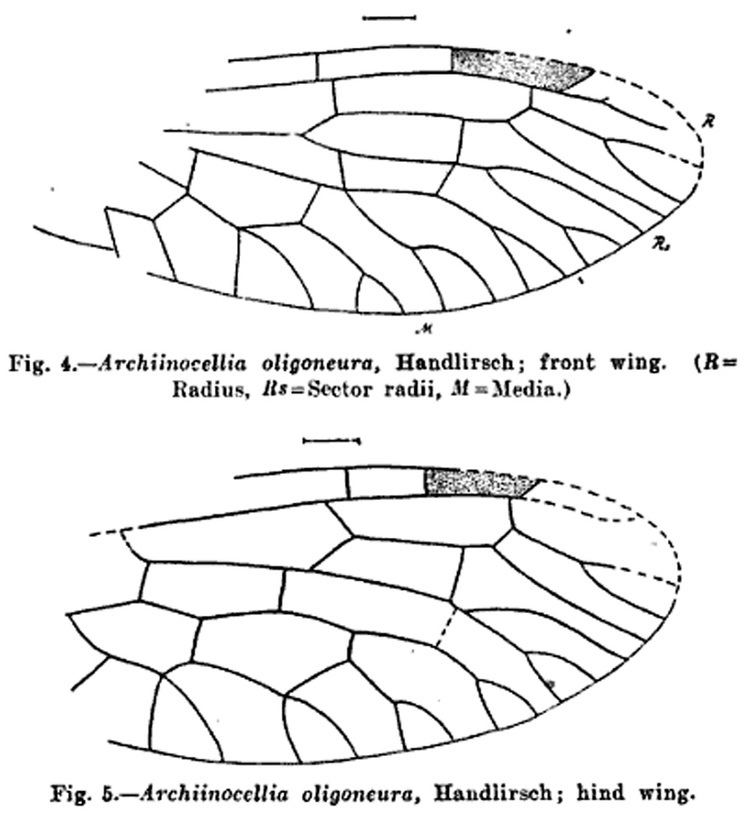Kingdom Animalia Class Insecta Family incertae sedis Scientific name Archiinocellia oligoneura | Phylum Arthropoda Order Raphidioptera Species †A. oligoneura Rank Genus | |
 | ||
Similar Raphidiidae, Neuropterida, Snakefly | ||
Archiinocellia is an extinct monotypic genus of Snakefly containing the single species Archiinocellia oligoneura.
The specimen was first studied and described by the prolific paleoentomologist Anton Handlirsch from a specimen collected by Canadian geologist and paleontologist Lawrence M. Lambe during fieldwork in central British Columbia. Only a single specimen, the holotype, is known, which was collected on July 21, 1906 from fossil bearing rocks near the Horsefly mine in Horsefly, British Columbia. The genus was named from archi referring to the primitive appearance of the wing characters and Inocellia, the type genus for Inocelliidae, the family the genus was placed in originally. The species name is a combination of oligo in reference to Oligocene, the age the location of the fossil was thought to be, and "neura".
The holotype consists of a superimposed partial pair of wings, one forewing and one hindwing, thus not allowing for gender identification and body description. The bases and several small areas of the apex and pterostigmal region are missing. The preserved length of 7 millimetres (0.28 in) allows the estimation of a total forewing length between 12 millimetres (0.47 in) and 14 millimetres (0.55 in). Though difficult to distinguish from one another, the forewing and hindwing vein structures show several distinct traits that set the genus apart from other raphidiopteran genera. Anton Handlirsch notes the damage to the pterostigma prevents determining if any cross veining is present. In a basal position from the stigma is a cross vein which does not correspond to the cross vein in the same region of modern Raphidia species.
Dr. Frank M. Carpenter, after examining the holotype, noted that the fossil was poorly preserved and the placement of the wings presented difficulties. While accepting Handlirschs drawings of the wings, Dr. Carpenter states the damage to the wings prevents any determination of genus placement lower than Raphidioptera incertae sedis. This placement is followed by D. Michael Engel who, in his 2002 listing of Raphidioptera fossil genera, placed the genus no lower than the suborder Raphidiomorpha. Dr Engel also noted the genus to be the only snakefly fossil genus from British Columbia and one of only two from Canada.
The age of the Horsefly sites was considered Oligocene for many years and Archiinocellia is still listed as an Oligocene genus in many modern works. However, the site has been re-dated to the Early Eocene and is part of the Okanagan Highlands fossil localities, which stretch from Driftwood Canyon Provincial Park in Smithers, B.C. south to Republic, Washington.
